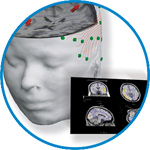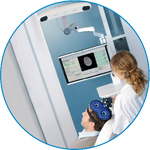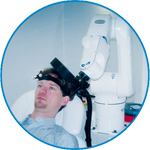- Home
- About ANT
-
Products

asa
asa is a highly flexible EEG/ERP and MEG analysis package with a variety of source reconstruction, signal analysis and MRI processing features.
.jpg)
eego mylab
The new frontier in multimodal brain research. With up to 16 kHz sampling rate, 256 EEG channels and unique software features, eego mylab gives you an unprecedented in-depth understanding of the human brain.

eego sports
eego sports offers complete freedom to collect high-density EEG data, bipolar EMG signals, and a variety of physiological sensor data, wherever and whenever required, with publish quality data in less than 15 minutes!

waveguard net
The waveguard net sets a new standard for research applications requiring high-density EEG data acquisition with quick preparation time, high flexibility, and subject comfort.

visor2
Our new and upgraded visor2 solutions integrate all the latest technologies for navigated rTMS, dual-coil navigation support, EEG-TMS recordings and pre-surgical evaluation for the highest quality in research and clinical procedures.

powerMAG ANT
The PowerMAG ANT 100 rTMS stimulator is designed for the specific needs of high-end TMS applications. Powerful high-frequency TMS as well as high precise single pulse and repetitive pulse protocols are combined in one single device.

xensor
xensor offers the solution for digitization of 3D electrode positions. xensor takes care of the whole procedure; it records, visualizes and stores positions acquired with a dedicated digitizer.

waveguard original
waveguard original is the cap solution for EEG measurements compatible with fMRI, MEG and TMS system. Use of active shielding guarantees performance in even the most demanding environments.

waveguard connect
waveguard connect EEG caps are a perfect match for hospitals and institutes aiming at reliable EEG, maximum uptime and great patient comfort! For optimal signal quality, the electrodes are made of pure, solid tin.

waveguard touch
waveguard touch is a dry electrode EEG cap. The unique Ag/AgCl coated soft polymer electrodes provide stable, research-grade EEG signals while maintaining subject comfort. The combination of these innovative dry electrodes and the industry-leading waveguard cap makes waveguard touch the best solution for dry EEG.

smartmove
smartmove allows planning of a complete TMS session ahead by defining stimulation sites based on anatomical MRI information and functional information like fMRI, PET or EEG/MEG.
Stay - References
- Support
- Events
- News
- Contact Us
You are here
The loci of oscillatory visual-object priming: A combined electroencephalographic and reaction-time study
The loci of oscillatory visual-object priming: A combined electroencephalographic and reaction-time study
The detection of reaction-times (RTs) to a target Kanizsa-type square (an illusory square defined by the collinear arrangement of 90° corner junctions) within a matrix of distractor junctions are expedited when the target display is preceded by a 40-Hz flickering display of premask crosses presented prior to, and at the locations subsequently occupied by the junctions of the target display. Priming effects were obtained when four crosses (which together matched the Gestalt arrangement of the target) were presented at the display locations subsequently occupied by the junctions forming the target Kanizsa square ( and ). The present study was conducted with the aim of replicating the 40-Hz RT priming effects, while simultaneously recording the observers EEG in order to establish the presence and location of Gestalt priming in the brain. The statistical pattern obtained in the RT data corresponded well with previous studies and was matched by the pattern of target P300 latencies across bilateral central and posterior electrodes. Planned analyses focused upon the evoked 40-Hz activity that co-occurs with the P300, revealing a more specific pattern of 40-Hz priming over the visual cortex. A subsequent series of cross-correlational analyses examined the cortical distribution and timing of Gestalt-prime generation during and subsequent to premask-display presentation. Correlations were revealed between stimulus related 40-Hz activity over a range of cortical loci, including the right temporal lobe, which is considered important for figure coding. Taken together, these findings not only support the role of a distributed 40-Hz mechanism during Gestalt-figure priming, but also suggest that patterns of oscillatory brain activity may be directly influenced by, and interpretable in terms of equivalent temporal patterns of stimulus activity.

 Read more
Read more.jpg)




